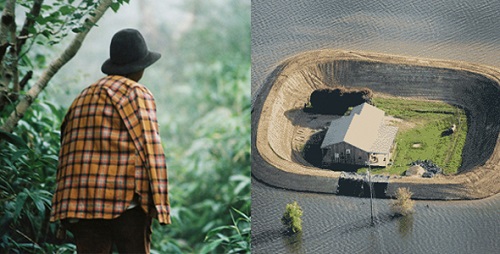
Everything in the universe is changing and social systems are no exception to this constant flux. But change is not an easy thing to accept, especially when it threatens the status quo and the world’s perception of normalcy. In the case of the individual, we resist change because it takes us out of our comfort zones and challenges us to a new normal. The great futurist thinker Jacques Fresco reminds us that the survival of any social system ultimately depends upon its ability to allow for appropriate change. In this sense the conscious social hive will continue to experiment and test inter-relationships, evolving and maturing a new society into existence. Change is appropriate when it improves societal structures as a whole. Part of that whole includes the complex interdependency with the planets environment. Our relationship with the forces of planet earth are so intertwined that we depend on its capacity to regulate fine tuning minimum life requirements. Change is also a constant in the morphology of planet earth; the astronomical history of our planet has undergone dramatic shifts due to glacial ages, volcanic disruptions, meteor impacts and pole shifting. Our brief passage on earth as a species has witnessed violent changes and huge mass extinction’s. These cataclysms have dwindled our survival chances sometimes reducing human population to 15 thousand individuals (Whitehouse, 2003). We have been an endangered species at the brink of oblivion. Our resiliency to bounce back in adverse environments would have not happened without cooperating with one another. We have become who we are through cooperation not competition. Our large brains respond to empathy and symbiotic communication. This triumph of cooperation over competition is evidenced by the way we come together in modern day catastrophes, especially at the neighborhood level. It is also suggested by social anthropologist’s that our species became successful because of our improved social skills and cooperation. By nurturing the playful side of human nature we promoted cooperation and equality (Gray, 2011). In the rich playground of language, communication and cooperative strategy, our brains grew and changed making more connections. Improved relationships and social incentives led to the diversification of human groups and the proliferation of skill sets. The diversification of skill sets in small social systems enriched the human experience. Fresco also points out the dynamic changing nature of social evolution, implying that human systems must continue to mediate new social possibilities, and the purpose of this is: “In order to
transcend our present limitations and enhance the lives of everyone” (Fresco, 2014). Another perennial thinker Buckminster Fuller points out in one of his famous phrases that: “to change something we must build a new model that makes the existing model obsolete” (Fuller, 1964). At the basis of any social system is economic activity. We urgently need a new model of economic activity, and this is fundamental for appropriate social change to take place. The good news is that new economic models are currently shaping and generating results in the entire world, in smaller communities and neighborhoods of our cities and towns. Additionally a handful of blueprints and design science principals begin to gain popularity and have been implemented, published and theorized by important thinkers. As we build this framework, societies will emerge out of their cloaking fold to change the way we do business with each other and community, creating new local markets. This basic roadmap will lead to a new economic paradigm that will be centered on local approaches to economic relationships. We will absorb the good lessons of the old economy and build upon its structure, honestly questioning the meaning of the money system and the purpose of economic activity. The model for a new structure must change the obsession with profit, growth and utility replacing it with maximizing the quality of our commons, changing focus on material accumulation to a focus on family and stewardship of this planet. This change will shift the mega-corporate radius with the too big to fail to the small but resilient regionally owned businesses that prosper in bio-diversity. The generating hubs of this transformation will rise at the local scale spreading meaningful and satisfying economic activity between peers; like the relations of trust and care, economies of affect, gift economies and networks of reciprocity. The investigation of this new economy will focus on the continuity and evolution of reasonable social expectations (Narotzky and Besnier, 2014). At the end of the day we have to redefine our social expectations with a humanistic model that is expressed in the flourishing of human potential. Solution based design science is here to spread and grow new bio-regional economic activity that will become our new markets, satisfying a society based on needs and not on desire. The following
areas will redefine human enterprise; they represent the first sprouts of change.
ABOUT THE AUTHOR
Carlos Cuellar Brown is a New York City time-based artist and essayist who has written on media art, social theory and metaphysics. He is currently a columnist for Second Sight Magazine out of the Netherlands and blogs here.
|
Blueprint for Change Part 2: Energy Self-Reliance
Carlos Cuellar Brown
This article is based on the
Full Insight, 27 February 2015
REPRINTED WITH PERMISSION
Blueprint for Change is an essay divided in 7 parts about how we can create a wiser, healthier and wholesome future. This is Part 2.
|
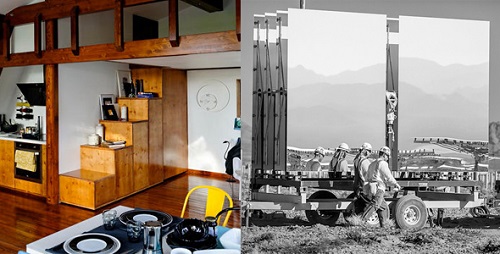
As we reformulate energy reliance we have to integrate more and more renewable energy into the old system. Through this transitional change, the oil-gas-coal based power grid will switch and begin to run primarily on renewables. Every community and neighborhood will be
empowered locally and become energy self-reliant, less dependent on providers, power companies and centralized post oil-gas-coal gird monopolies. Renewable energies include wind, photovoltaic, tidal, hydro, thermal and others. These clean energies are generating significant resources spilling back capacity to the current electrical grid systems. World wide estimates suggest 22% of our energy requirements are being met with a mix of alternative clean energies (David Appleyard, 2014). In 2013 the US renewable energy sources including hydroelectric, biomass, geothermal, wind and solar generated 13% of the electricity demand (“U.S. Energy Information Administration,” 2015). Partly due to government incentives and policies, the US is second in the world in alternative energy resource usage. Interestingly in 2013 the solar photovoltaic sector grew significantly, installing more capacity than any other renewable technology except perhaps for hydropower (David Appleyard, 2014). Solar has specially increased and generated a significant amount of power on the small-scale level such as private rooftops and city buildings. In the US, solar schools are potentiating their energy capacity, in the last decade the equivalent energy produced by 50 million gallons of gas per year has been generated on these rooftops and fields. In New York alone 169 schools have gone solar generating as much as 7,316 kilowatts of clean, renewable and affordable electricity (Shavana Abruzzo, 2014). We can envision a time when all building ordinances will include smart energy buildings with solar panels on every roof and a time when all asphalt roads and highways will be replaced with solar photovoltaic carpets that harvest this magnificent resource. New results with latest technology have doubled the photovoltaic sunlight convertibility performance to a 40% milestone (“In world first, researchers convert sunlight to electricity with over 40 percent efficiency,” 2014). Another good sign is that the US state and government policies such as Tax Credits, Renewable Portfolio Standards (RPS) and Renewable Energy Certificates (REC’s) are aiming to increase renewable energy use and make the sector financially desirable (“U.S. Energy Information Administration,” 2015).“A growing numbers of cities, states, and regions are developing strategies to transition to 100 percent renewable energy. For example, Djibouti, Scotland, and Tuvalu are targeting 100 percent of their electricity from renewables by 2020” (David Appleyard, 2014). This energy independence will arrive when we improve renewable energy transmission lines, eliminating spillage, increasing storage capabilities and building smart grid technologies (“Running on Renewables,” 2014). Storage is perhaps the biggest breakthrough technology awaiting for innovation; when our passive energy storage capacities increase ten fold we will have energy accumulated for decades. Think of what abundant reservoirs of energy will do to cheapen the supply of energy for consumption. More efficient and cheaper energy technologies managed on the regional scale will generate local business and bring big economic advantages to community markets. Communities will have lower operational costs to run economic activity; energy will be harvested and stored locally and at a fraction of the oil-gas-coal unit price. Energy self-reliance will fuel the transition to regional economic development, where money is invested back into community and into human activity and not into drilling and mining for petro-carbon; focusing on the restoration and refurbishing of the commons, along side a new retrofitted economy of maintenance and care. In this society global markets will undergo economic de-growth and become exotic luxury trading whereas regional markets with clean energy independence will thrive and flourish.
EXAMPLES
Example 1. The following are aerial photographs of the Ivanpah Solar Electric Generating System—a massive expanse of solar panels in California’s Mojave Desert:
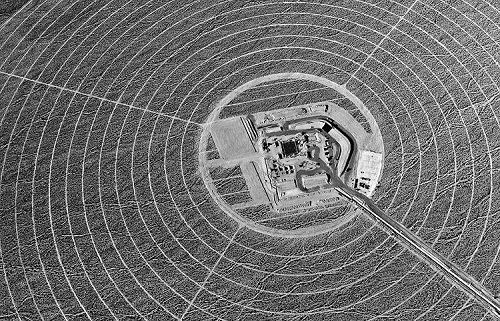
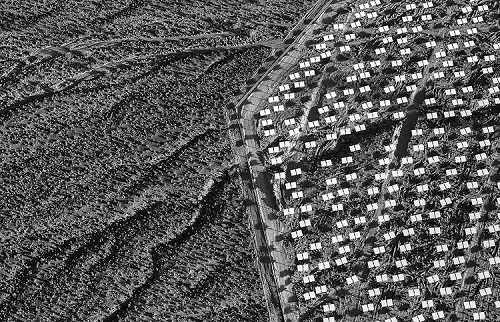
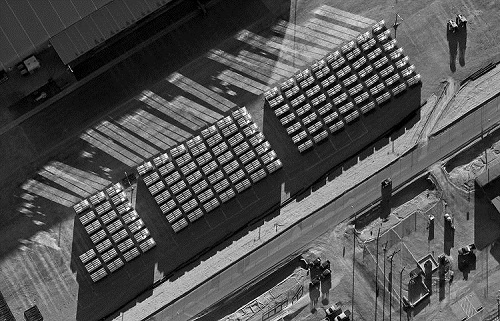
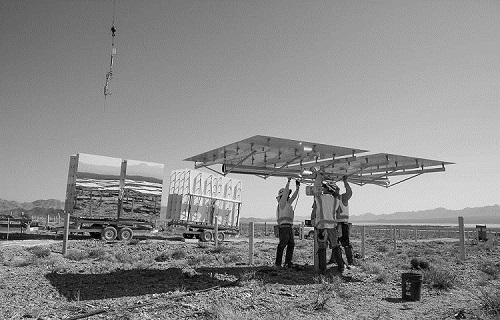
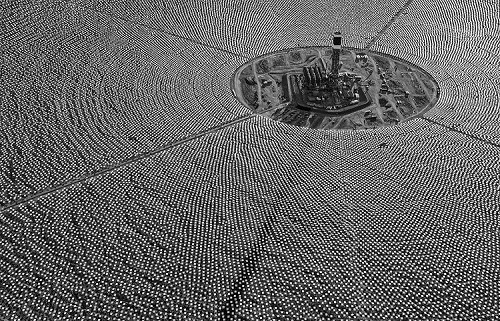
Example 2. Nike has reduced the emissions produced by its facilities nearly 15%. The company made a conscious decision to stop focusing on purchasing renewable energy certificates and start focusing on managing actual reductions.

Example 3. The Soleta House, or Soleta zeroEnergy One, belongs to a line of eco homes that includes multifunctional structures with high-tech, clean-energy systems that can be controlled via your smartphone. Photos:
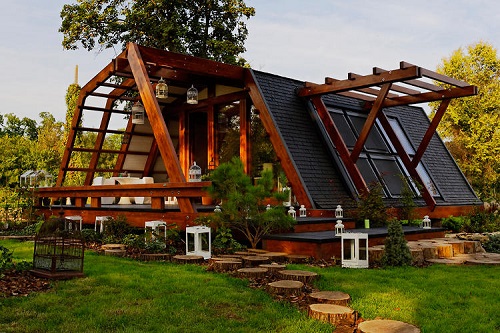
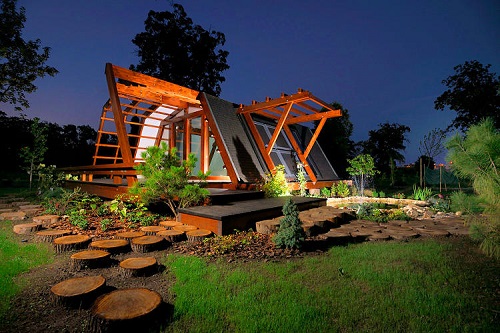
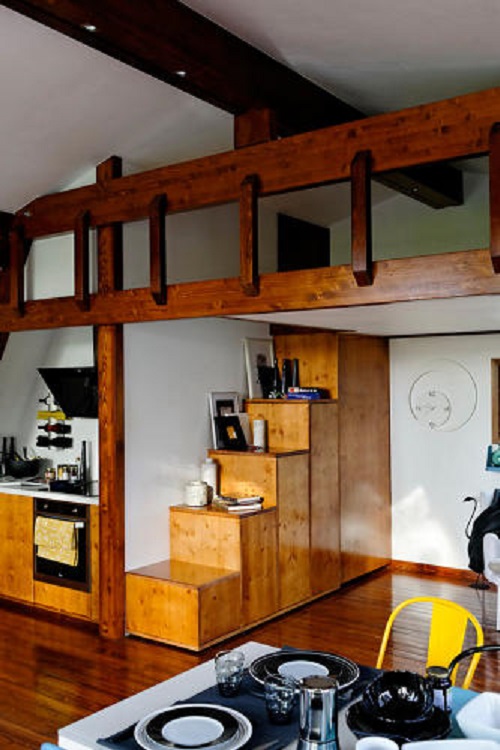
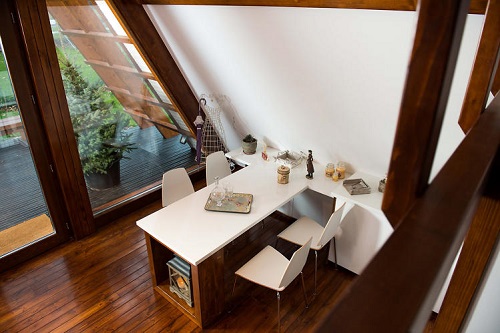
ABOUT THE AUTHOR
Carlos Cuellar Brown is a New York City time-based artist and essayist who has written on media art, social theory and metaphysics. He is currently a columnist for Second Sight Magazine out of the Netherlands and blogs here.
|
|Back to TITLE|
Page 1
Page 2
Page 3
Page 4
Page 5
Page 6
Page 7
Page 8
Page 9
Supplement 1
Supplement 2
Supplement 3
Supplement 4
Supplement 5
Supplement 6
PelicanWeb Home Page
|